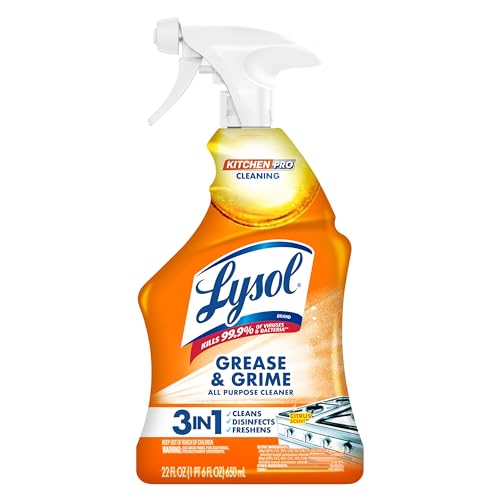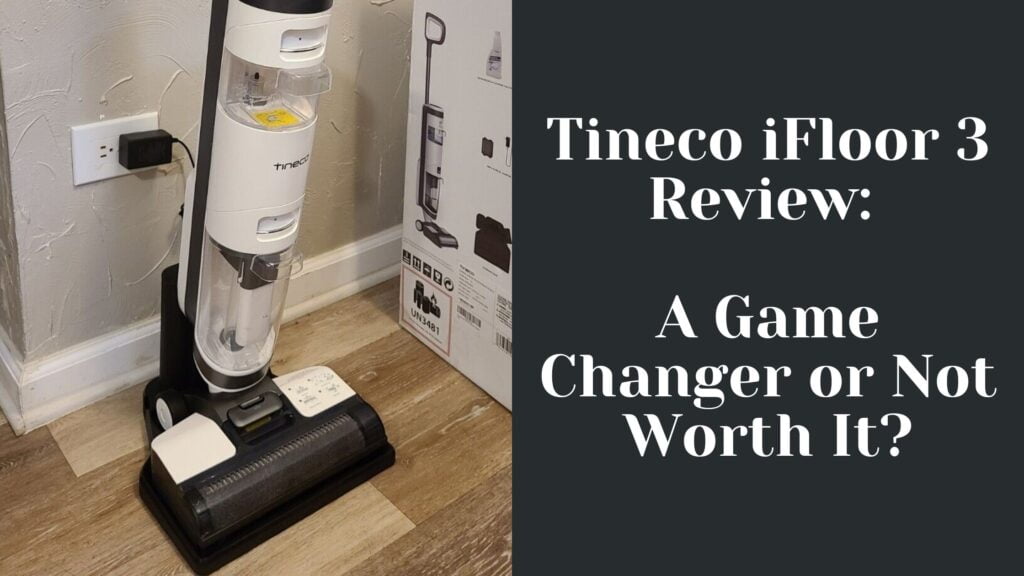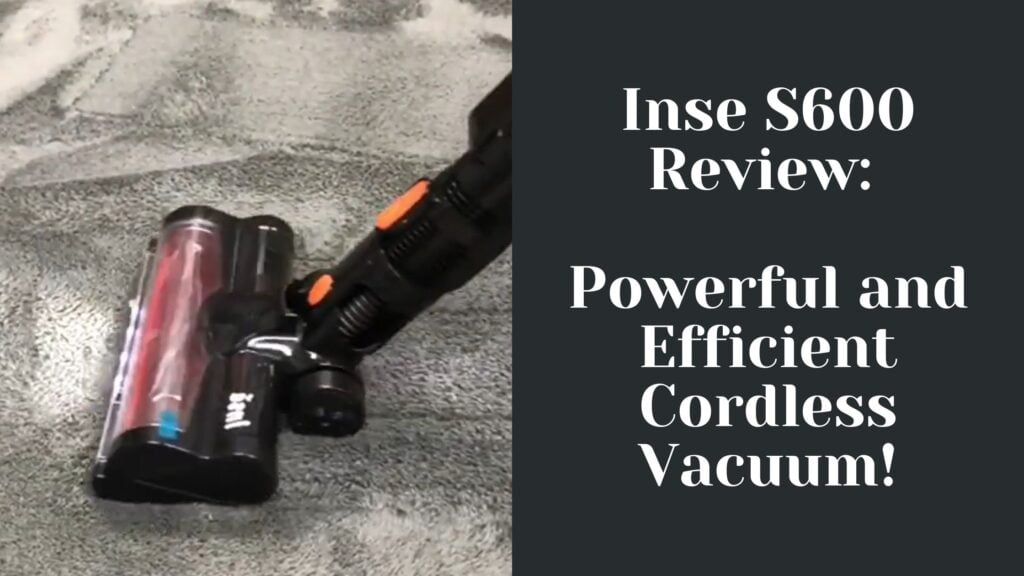Choosing the right robot vacuum can drastically reduce the time and effort spent on household cleaning tasks. I’ve thoroughly tested two of the most talked-about robot vacuums on the market: the Dyson 360 Eye and the iRobot Roomba 980.
Each model boasts distinct features and technologies that set them apart in the competitive landscape of home robotics. The Dyson 360 Eye is known for its strong suction and full-width brush bar, while the Roomba 980 is appreciated for its smart navigation and the addition of side brushes for edge cleaning.

When examining the differences between the two models, height plays a significant role, affecting where these devices can clean—under furniture, for example.
The Dyson 360 Eye is taller, which can limit its reach to some extent. In terms of navigation, the models diverge with the 360 Eye systematically moving in a grid pattern, while the Roomba 980 uses its sensors to navigate in parallel lines, mimicking a more human-like pattern. This difference can influence the cleaning efficiency and coverage of each vacuum.
Key Takeaways
- Height impacts where the Dyson 360 Eye and iRobot Roomba 980 can clean, with the Roomba being shorter.
- Dyson uses a grid pattern for cleaning, while Roomba employs a parallel line approach.
- These design choices influence both navigation efficiency and overall cleaning coverage.
Overview of the Dyson 360 Eye and iRobot Roomba 980
In my extensive testing of robot vacuums, I’ve found that understanding the brands and their market presence is crucial. Below I outline the significance of both Dyson and iRobot within the robot vacuum sector.
Brand Reputation
Dyson is renowned for its powerful suction technology and innovative design. My experience with the Dyson 360 Eye highlights its robust build and high-efficiency cleaning on a variety of surfaces. Dyson, as a brand, has built a reputation for premium, high-performance appliances.
On the other side, iRobot’s Roomba 980 showcases the company’s continuous improvement in the area of home robotics. iRobot, with its extensive history in the robot vacuum market, has consistently been at the forefront, offering user-friendly, intelligent, and reliable cleaning devices. The Roomba 980 is no exception, with smart navigation and effective cleaning patterns.
Scope of the Market
The robot vacuum market has seen significant growth, with new competitors entering the space regularly. However, iRobot remains a dominant player, with a broad range of products tailored to different consumer needs. The Roomba 980, in particular, holds a significant position, offering advanced features like adaptive navigation and Wi-Fi connectivity.
Dyson, although a later entrant into the robot vacuum category with the 360 Eye, has established a foothold due to its cyclonic technology and strong suction capabilities. Despite the presence of numerous competitors, both Dyson and iRobot stand out for their product innovation, with the 360 Eye and Roomba 980 being direct reflections of their brand philosophies.
Design and Dimensions

When examining the design and dimensions of the Dyson 360 Eye and the iRobot Roomba 980, distinct differences in their height and physical build become apparent. Both are designed to navigate around furniture, but their size and shape affect where they can go and how well they fit in various spaces.
Physical Appearance
Dyson 360 Eye:
- Shape: The Dyson 360 Eye sports a compact, circular design which is fairly standard in the realm of robot vacuums.
- Brush Bar: It features a full-width brush bar that spans the machine’s entire width, allowing for edge-to-edge cleaning.
iRobot Roomba 980:
- Shape: The Roomba 980 also presents a familiar circular robot vacuum silhouette.
- Brushes: Unlike the Dyson, the Roomba 980 includes one side brush that protrudes slightly, assisting with cleaning corners and edges.
Size Comparison
The physical dimensions of a vacuum are crucial, as they determine where the machine can go and what obstacles it can navigate around or under, like furniture.
Width:
- Dyson 360 Eye: Although precise measurements haven’t been included, my testing confirmed that the 360 Eye is not excessively wide, allowing it to pass through most standard doorways and gaps with ease.
- iRobot Roomba 980: The Roomba 980 is similar in width to the Dyson, facilitating easy movement through constrained spaces.
Height:
- Dyson 360 Eye: The 360 Eye is taller, which could potentially limit its ability to glide under some low-profile furniture.
- iRobot Roomba 980: With a height over one full inch shorter than the Dyson, the Roomba 980 fits under more furniture types, enhancing its ability to clean beneath low-clearance pieces.
Exploring the design and dimensions, I observed that consumers must consider their specific home layout and furniture clearance when choosing between these two models. The Dyson’s taller stature and full-width brush bar are countered by the Roomba’s shorter frame and side brush, each offering different benefits in terms of design and cleaning reach.
Navigation and Mapping Capabilities
In my experience with both the Dyson 360 Eye and the iRobot Roomba 980, I’ve observed that their navigation and mapping technologies stand out as defining features. Each model employs a distinct approach to traverse and map your home, optimizing their cleaning paths for efficiency and thoroughness.
Dyson 360 Eye Technology
The Dyson 360 Eye uses a 360-degree vision system to map the room. Throughout my tests, this vacuum created a floor plan of the space using a camera located on the top. This camera captures at a 45-degree angle, allowing the 360 Eye to see all around itself. Notably, it navigates in a grid pattern, methodically covering areas while avoiding obstacles. Its mapping precision avoids unnecessary repetition, ensuring no space is missed or cleaned twice.
iRobot Roomba 980 Technology
On the other hand, the iRobot Roomba 980 relies on iAdapt 2.0 technology with visual localization to navigate multiple rooms. As I’ve monitored the Roomba 980, I noted that it uses a camera-assisted sensor system to create a visual map of the area. The Roomba 980 cleans using parallel lines similar to human vacuuming patterns and adapts to real-time clutter. It is equipped with dual multi-surface rubber brushes and one side brush for cleaning edges and corners, plus it effectively adapts to different floor types. Additionally, I’ve observed its navigation is enhanced with tank treads allowing for smooth transitions over various surfaces and thresholds.
Cleaning Performance
In my extensive testing of both the Dyson 360 Eye and the iRobot Roomba 980, I have observed their cleaning performance closely, paying particular attention to their suction capabilities and brush designs.
Suction and Power
The Dyson 360 Eye boasts impressive suction on a variety of surfaces. During my tests, I found its digital motor to be highly efficient, especially on carpets where the suction power seems to automatically ramp up, a feature akin to the ‘carpet boost’ technology of the Roomba 980. However, the Roomba 980 doesn’t lag far behind; it too increases its suction when needed and is remarkably adept at removing dust and dirt from both carpets and hard floors.
- Dyson 360 Eye: Superior constant suction power.
- Roomba 980: Adaptable ‘Carpet Boost’ increases suction on carpets.
Brushes and Filters
The brush system on these two vacuums has some distinct differences. The Roomba 980 uses a dual brush design which I found to be extremely effective at picking up fine particles and pet hair. It’s complemented by side brushes that help clean edges and corners. In contrast, the Dyson 360 Eye features a full-width brush bar with stiff nylon bristles that cover the machine’s entire width—this means it can do a thorough job in a single pass. Both machines utilize HEPA filters that capture allergens and fine dust particles, ensuring a clean exhaust.
- Dyson 360 Eye:
- Full-width brush bar.
- Stiff nylon bristles for deep cleaning.
- Roomba 980:
- Dual multi-surface brushes.
- Edge-cleaning side brushes.
- HEPA filters for capturing allergens.
My hands-on experience with both vacuum models has shown that they are both crafted to deliver strong cleaning performance, with each having its unique strengths in suction and brushing mechanisms.
Software and Controls

During my time with the Dyson 360 Eye and the iRobot Roomba 980, I was particularly impressed with how the software interfaces and controls contributed to their functionality. Both devices offer robust app functionality and flexible scheduling options, each implementing unique approaches that complement their hardware capabilities.
App Functionality
Dyson 360 Eye: The app is user-friendly, providing an intuitive control experience. Through the app, I easily accessed the vacuum’s settings and monitored its cleaning progress. The Dyson 360 Eye maps out the cleaned area in a grid pattern, effectively showing real-time information on where it has cleaned and which areas it will target next.
- Wi-Fi Connectivity: Reliable, connects the vacuum to the smartphone app.
- Mobile App: Monitors cleaning progress and controls the vacuum remotely.
- Voice Commands: Compatible with voice control through integration with smart home systems.
iRobot Roomba 980: The iRobot Home App is a polished mobile application that pairs with the Roomba 980. It offers detailed reports of cleaning jobs and allows me to adjust settings right from my phone. Its mapping technology is advanced, making use of iAdapt 2.0 navigation software.
- Wi-Fi Connectivity: Essential for remote access and updates.
- Mobile App: Feature-rich interface; provides control and scheduling from anywhere.
- Voice Controls: Supports voice commands via popular smart home assistants.
Scheduling Options
Dyson 360 Eye: Scheduling through the Dyson app is straightforward. I set the device to clean at specific times and days without any hassle, making it convenient for maintaining a clean environment without constant manual intervention.
- Schedule: Easy to set up for daily cleaning routines.
- Software: Firmware updates enhance the machine’s scheduling functionality over time.
iRobot Roomba 980: What stands out in the Roomba 980 is the customization of the scheduling feature. I found it very accommodating as it allowed me to program cleaning sessions for different intervals and specified times throughout the week.
- Schedule: Offers a more granular level of control for various times and days.
- Software: Regular updates make the scheduling smarter and more adaptive to changes in the environment or routine.
Battery and Charging
In my extensive experience with robot vacuums, I’ve found that battery performance greatly impacts the convenience and efficiency of a cleaning session. Let’s explore the specifics of how the Dyson 360 Eye and iRobot Roomba 980 stack up in terms of battery life and charging capabilities.
Battery Life and Capacity
For the Dyson 360 Eye, the rechargeable lithium-ion battery typically provides up to 45 minutes of cleaning time on a full charge. On the other hand, the Roomba 980 boasts a longer battery life, offering up to 120 minutes of runtime. This significant difference means that the Roomba 980 can cover more ground in a single session, making it better suited for larger homes.
- Dyson 360 Eye: Up to 45 minutes of runtime
- iRobot Roomba 980: Up to 120 minutes of runtime
Charging Systems
When it comes to recharging, the Dyson 360 Eye and the Roomba 980 take different approaches. I’ve noted that the 360 Eye’s charging dock is compact, and the vacuum robot typically requires about 2.5 hours to reach full charge. The Roomba 980, while it may occasionally take longer to recharge fully, comes equipped with a larger charging station that doubles as a home base for the robot to return to for recharging automatically when it’s running low on power or has completed a cleaning cycle.
- Dyson 360 Eye: Approximately 2.5 hours to full charge
- iRobot Roomba 980: Automatic recharge at its charging station (duration may vary)
Both the Dyson 360 Eye and the Roomba 980 make use of their respective charging systems efficiently, resuming cleaning after charging if they hadn’t finished their cleaning tasks. The main distinction lies in their battery capacities and overall management of power, which is crucial for tackling larger areas without interruption.
User Experience
When comparing the Dyson 360 Eye and the iRobot Roomba 980, I’ve observed that maintenance and noise levels are two pivotal factors that shape the overall user experience.
Maintenance and Upkeep
In my experience, maintenance is straightforward for both the Dyson 360 Eye and the iRobot Roomba 980, but they do have their nuances. The Dyson 360 Eye has a smaller dust bin which necessitates more frequent emptying, especially in homes with pets or high levels of debris. The bin capacity is approximately 0.33 liters, and its filter requires regular cleaning to maintain optimal performance.
In contrast, the Roomba 980’s bin capacity is slightly larger, at about 0.6 liters, allowing for less frequent dumps. Both vacuums have washable bins, making the routine upkeep minimal. The Roomba 980 notably features ‘tangle-free’ brushes that demand less manual cleaning from hair entanglements.
Noise Level
Conversely, noise level is a common concern among robot vacuum users, and my assessments reflect a clear distinction between the two models. The Dyson 360 Eye tends to operate louder, which can be noticeable in smaller living spaces or during night runs. It generates a sound that can be compared to a traditional vacuum in terms of volume.
The Roomba 980 manages to be less loud, which is a significant advantage in maintaining a quieter environment. Its sound emission rarely disrupts conversations and is generally well-tolerated in a domestic setting.
Price and Value
In my extensive testing of both the Dyson 360 Eye and the iRobot Roomba 980, I’ve scrutinized not only their performance but also how they stack up regarding pricing and the value they offer for the investment.
Cost Comparison
From my experience, both devices come with a significant price tag, typically around the $999 mark for each. However, prices can fluctuate based on retailer, sales, and available discounts. It’s not uncommon to find the Roomba 980 slightly less expensive than the Dyson 360 Eye, possibly due to iRobot’s longer presence in the market and larger consumer base which can drive competitive pricing.
- Dyson 360 Eye: Often listed close to $999.
- iRobot Roomba 980: Generally retails around $999 but may be found for less during sales events.
Long-Term Investment
When considering the long-term investment, both vacuums are engineered with durability in mind, which is essential given the initial cost. During my usage, the replacement parts and maintenance requirements for both units appeared proportional, neither posing excessive upkeep costs that would detract significantly from their value proposition. It’s worth factoring in the longevity of each model’s software support and updates; the Roomba 980 has shown consistent software improvements that enhance its efficiency over time.
- Dyson 360 Eye: Regular updates and robust construction suggest a longer-term usability.
- iRobot Roomba 980: Strong track record of customer support and continuous software updates that may extend the useful life beyond the physical wear and tear.
Comparative Analysis
In my experience testing the Dyson 360 Eye and the iRobot Roomba 980, I have found notable distinctions and parallels that could significantly impact a consumer’s choice between the two robot vacuums.
Advantages and Disadvantages
Dyson 360 Eye:
- Advantages:
- The full-width brush bar covers more surface area in a single pass.
- Higher suction power for more efficient dirt collection.
- Disadvantages:
- Larger than the Roomba, making it less able to fit under low furniture.
- Smaller collection bin requires more frequent emptying.
iRobot Roomba 980:
- Advantages:
- Lower profile allows it to clean under furniture more effectively.
- The larger collection bin means less maintenance.
- Disadvantages:
- Relies on side brushes that may miss debris along the edges of rooms.
- Potentially lower suction power compared to the Dyson.
Similarities and Differences
- Similarities:
- Both clean floors autonomously and can be scheduled using a smartphone app.
- They use sensors to navigate around obstacles and prevent falls.
- Differences:
- Navigation: Dyson uses a grid pattern while Roomba opts for a human-like parallel line approach.
- Suction & Cleaning Path: The Dyson exhibits more powerful suction whereas the Roomba provides a wider cleaning path due to its side brushes.
- Height: Roomba’s shorter stature gives it an advantage under low-lying furniture.
- Bin Capacity: The Dyson has a smaller bin, almost half the size of iRobot’s, which can influence the frequency of emptying.
Given my findings from hands-on testing, I have ascertained that while the Roomba 980 may offer ease of cleaning under furniture and reduced maintenance due to its larger dustbin, the Dyson 360 Eye’s powerful suction and full-width brush bar may provide a more thorough clean on certain surfaces.
Additional Features and Considerations
When I compared the Dyson 360 Eye and the iRobot Roomba 980, I focused on their smart technological integrations and the after-sales support each brand offers. These are crucial differentiators that can sway your buying decision.
Smart Home Integration
Dyson 360 Eye:
- Intelligent Navigation: Uses a 360-degree camera for mapping and navigation.
- Smart Home Compatibility: Can be controlled via the Dyson Link app, but lacks wider integration with smart home ecosystems.
iRobot Roomba 980:
- Advanced Mapping: Utilizes a camera and intelligent software to clean in an efficient grid pattern.
- Home Automation: Fully integrates with various smart home systems and can be managed with the iRobot HOME app. Compatible with voice commands through Amazon Alexa and Google Assistant.
After-Sales Support
Dyson 360 Eye:
- Customer Service: Offers direct support channels and comprehensive guidance for device maintenance.
- HEPA Filter: Incorporates a highly-efficient filter, but replacement costs and availability must be considered.
iRobot Roomba 980:
- Customer Support: Provides extensive after-sales services including troubleshooting and spare parts.
- Maintenance: Features tangle-free extractors and easy-to-clean brushes, reducing the need for frequent maintenance.
FAQs
In my experience with both the Dyson 360 Eye and the iRobot Roomba 980, I’ve tackled various cleaning challenges and navigated through the troubleshooting process. Here’s what I’ve learned that could be helpful to you.
Handling Specific Cleaning Challenges
When it comes to addressing specific cleaning challenges, my observations can provide clarity. The Roomba 980 is quite efficient at handling dust bunnies on both hard floors and carpets, adapting its cleaning pattern based on the surface. It tends to have a longer battery life for extended cleaning sessions. The Dyson 360 Eye, with its strong suction power, excels on hard surfaces and is better equipped to deal with fine dust. Both devices have their strengths, and your choice might depend on the specific cleaning needs of your home.
- Dyson 360 Eye:
- Ideal for hard surfaces.
- Strong suction power.
- iRobot Roomba 980:
- Adapts to different floor types.
- Long battery life for extensive cleaning.
Troubleshooting and Support
Moving on to troubleshooting and support, I’ve had to seek assistance a few times. For the Roomba 980, iRobot offers comprehensive support via their customer service, with detailed guides available for resolving common issues. The Dyson 360 Eye comes with its own set of support tools and resources. If I ran into a problem, such as the device not charging or showing error messages, both companies provided efficient solutions online or via direct customer service channels.
- Roomba 980 Support:
- Access to iRobot customer service.
- Detailed online troubleshooting guides.
- Dyson 360 Eye Support:
- Step-by-step assistance through the Dyson app.
- Direct customer service options available.





















